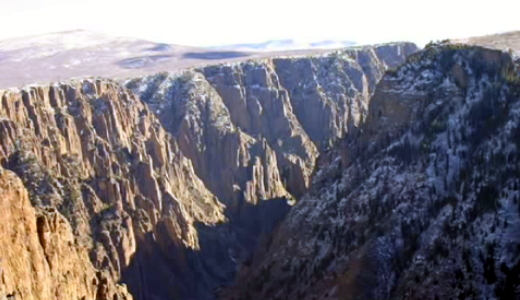Black Canyon of the Gunnison National Park
On October 21, 1999, the Black Canyon of the Gunnison was designated a National Park in western Colorado.
The long narrow canyon is a carving of about two million years of relentless river erosion through the soft as well as granite bedrock created by massive mountain uplifts, volcanic activity, and volcanic deposits that filled cracks in the rock and covered it with ash and mud. The canyon’s name comes from some of the canyon’s black volcanic rocks. Its extreme steepness prevents the afternoon sun from reaching the river at the bottom.
The south facing canyon walls tend to plunge straight down into the narrow, rock-strewn Gunnison River. The north facing walls are not quite as steep and the result of less direct sunlight so the non-stop freeze-thaw and expansion-contraction cycles contribute to greater erosion and rockfall. These produce more soil and livable habitat for vegetation to take root… creating another eroding factor.

The canyon is rimmed in Pinyon pine and juniper. Rimrock potholes are home to small insect and animal species specifically adapted to the erratic water replenishment and evaporation of their specialized environment. Inner canyon mountain forests of various species move downslope on hospitable patches of soil to bottom wetlands and river biomes. Temperatures are warmer at the canyon bottom than up at the rim exposure.
For all its wilderness, rock sheer walls, brief sunlit patches, the canyon park contains hundreds of plant and animal species at every level of its startling depth. The Gunnison River descends steeply throughout the park, averaging a drop of 8 m/km (43 ft/mi)… quite enough to make itself heard to visitors hundreds of meters above at the canyon’s edge. An invitation and a challenge to wilderness explorers.
B Bondar